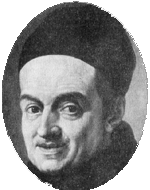

Italian composer, born at Bologna on April 24th, 1706. His father, Antonio Maria Martini, a violinist, taught him the elements of music and the violin; later he learned singing and harpsichord playing from Padre Pradieri, and counterpoint from Antonio Riccieri. Having received his education in classics from the fathers of the oratory of San Filippo Neri, he afterwards entered upon a noviciate at the Franciscan monastery at Lago, at the close of which he was received as a Minorite on September 11th, 1722. In 1725, though only nineteen years old, he received the appointment of maestro di cappella in the Franciscan church at Bologna, where his compositions attracted attention. At the invitation of amateurs and professional friends he opened a school of composition at which several celebrated musicians were trained; his pupils numbered about 100, including such illustrious men as J.C. Bach, Grètry, Jommelli, and W.A. Mozart. As a teacher he consistently declared his preference for the traditions of the old Roman school of composition. Padre Martini was a zealous collector of musical literature, and possessed an extensive musical library. Burney estimated it at 17,000 volumes; after Martini's death a portion of it passed to the Imperial library at Vienna, the rest remaining in Bologna, now in the Liceo Rossini. Most contemporary musicians spoke of Martini with admiration, and Mozart's father consulted him with regard to the talents of his son. Abt Vogler, however, makes reservations in his praise, condemning his philosophical principles as too much in sympathy with those of Fux, which had already been expressed by P. Vallotti. He died at Bologna on August 4th, 1784. His Elogio was published by Pietro della Valle at Bologna in the same year.
The greater number of Martini's sacred compositions remain unprinted. The Liceo of Bologna possesses the MSS. of two oratorios; and a requiem, with some other pieces of church music, are now in Vienna. Litaniae atque antiphonae finales B. V. Mariae were published at Bologna in 1734, as also twelve Sonate d'intavolalura; six Sonate per iorgano ed ii cembalo in 1747; and Duetti da camera in 1763. Martinis most important works are his Storia della musica (Bologna, 1757-1781) and his Saggio di contrapunto (Bologna, 1774-1775). The former, of which the three published volumes relate wholly to ancient music, and thus represent a mere fragment of the authors vast plan, exhibits immense reading and industry, but is written in a dry and unattractive style, and is overloaded with matter which cannot be regarded as historical. At the beginning and end of each chapter occur puzzle-canons, wherein the primary part or parts alone are given, and the reader has to discover the canon that fixes the period and the interval at which the response is to enter. Some of these are exceedingly difficult, but Cherubini solved the whole of them. The Saggio is a learned and valuable work, containing an important collection of examples from the best masters of the old Italian and Spanish schools, with excellent explanatory notes. It treats chiefly of the tonalities of the plain chant, and of counterpoints constructed upon them. Besides being the author of several controversial works, Martini drew up a Dictionary of Ancient Musical Terms, which appeared in the second volume of G. B. Donis Works; he also published a treatise on The Theory of Numbers as applied to Music. His celebrated canons, published in London, about 1800, edited by Pio Cianchettini, show him to have had a strong sense of musical humour.